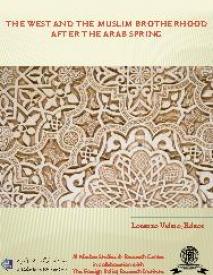The West and the Muslim Brotherhood after the Arab Spring
Before December 2010, virtually no one had heard of Mohammed Bouazizi outside of the dilapidated central Tunisian town of Sidi Bouzid. Yet when he set himself on fire in front of the local governor’s office, in a desperate protest gesture against the confiscation of his goods and the apparent humiliation he suffered at the hands of the local police, the poor fruit seller became the symbol of a protest movement that engulfed first Tunisia and then large swaths of the Arab world, changing the region’s history.
Geachte bezoeker,
De informatie die u nu opvraagt, kan door psychotraumanet niet aan u worden getoond. Dit kan verschillende redenen hebben,
waarvan (bescherming van het) auteursrecht de meeste voorkomende is. Wanneer het mogelijk is om u door te verwijzen naar de bron
van deze informatie, dan ziet u hier onder een link naar die plek.
Als er geen link staat, kunt u contact opnemen met de bibliotheek,
die u verder op weg kan helpen.
Met vriendelijke groet,
Het psychotraumanet-team.
Reference:
Lorenzo Vidino (ed.) | 2013
157 pagina's | Philadelphia : Foreign Policy Research Institute
http://www.fpri.org/docs/201303.west_and_the_muslim_brotherhood_after_the_arab_spring.pdf
157 pagina's | Philadelphia : Foreign Policy Research Institute
http://www.fpri.org/docs/201303.west_and_the_muslim_brotherhood_after_the_arab_spring.pdf


